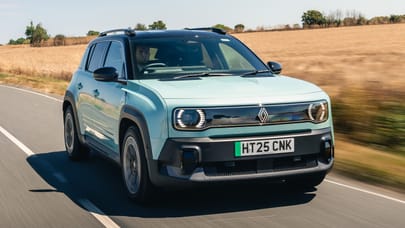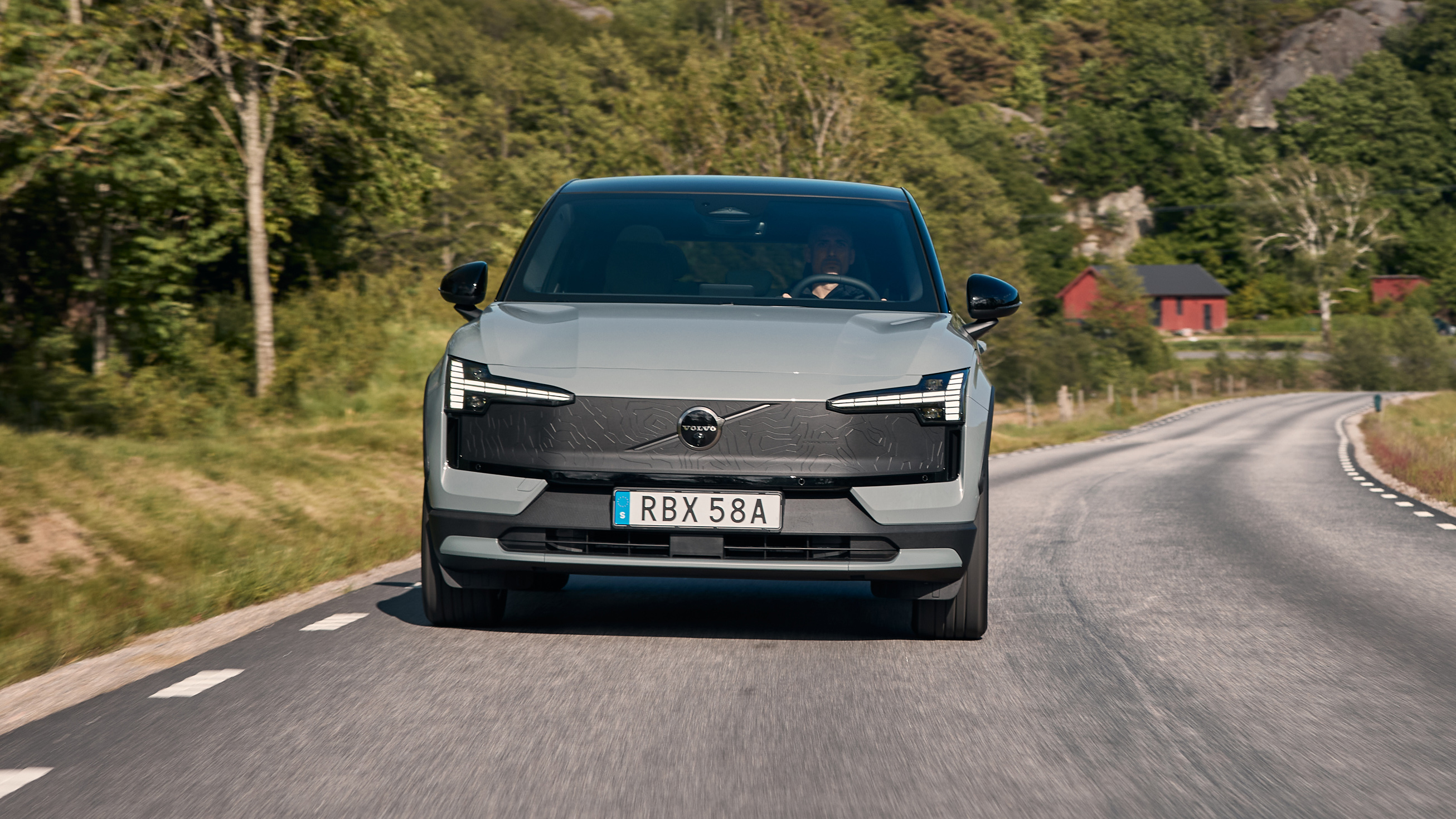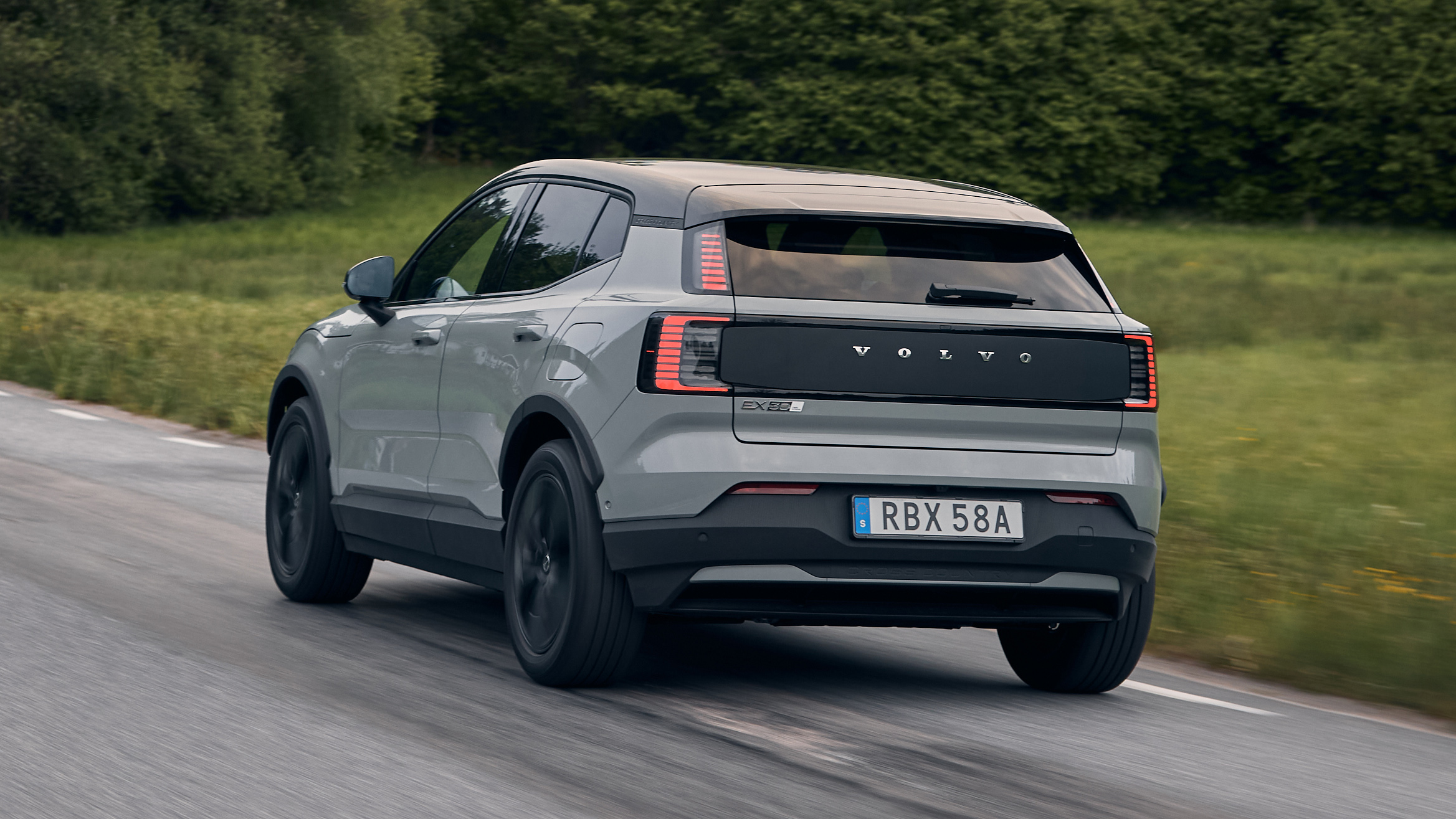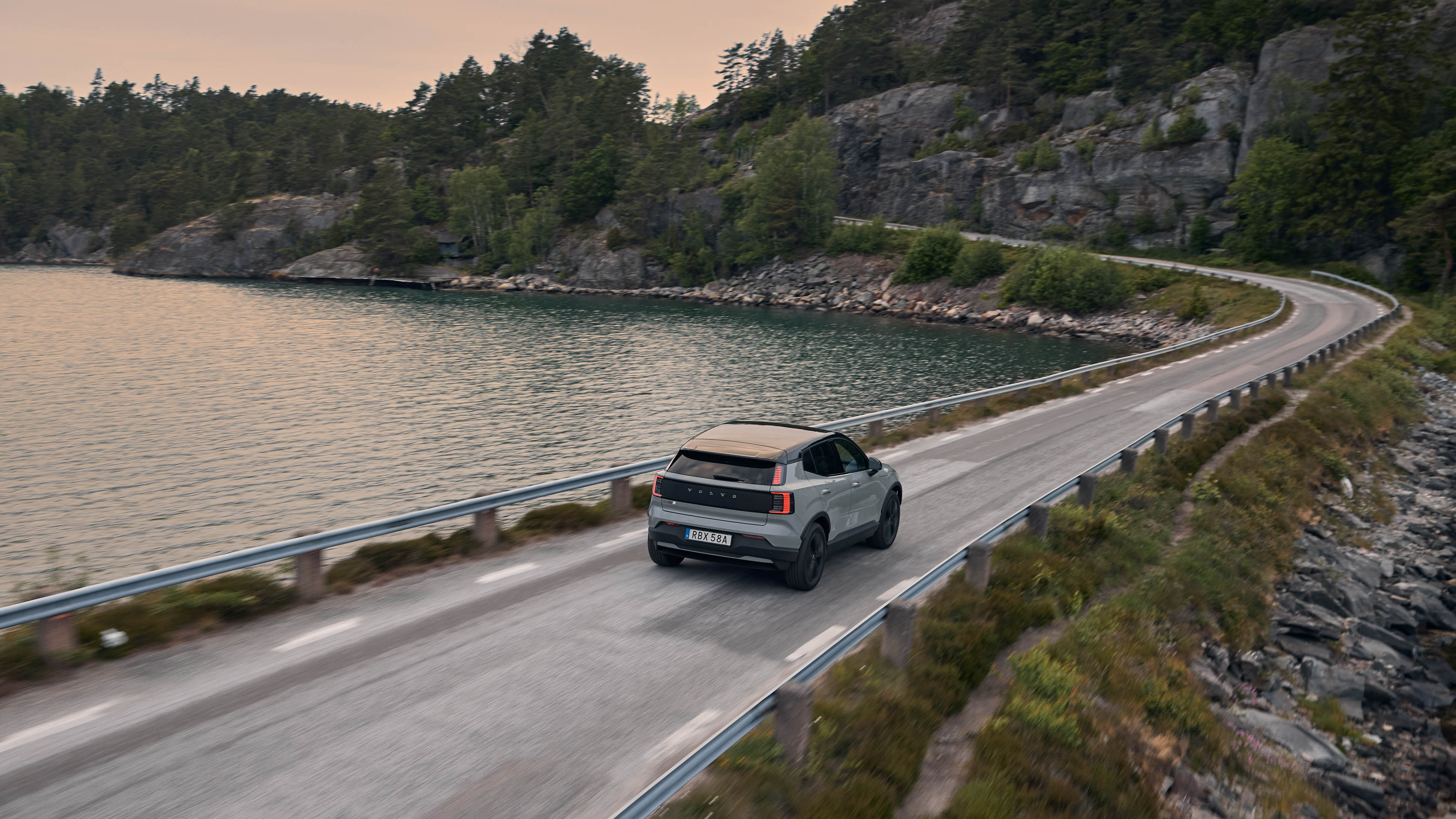
Volvo EX30 Cross Country review: what exactly is the point of this £47k, 422bhp crossover?
£47,060 when new
SPEC HIGHLIGHTS
- Range
(Combined)265.3 miles
- Battery
Capacity69kWh
- BHP
422.4bhp
- 0-62
3.7s
- CO2
0g/km
- Max Speed
112Mph
Wait, what am I looking at here?
It’s the Volvo EX30 of course, although while the standard car straddles a fine line between hatchback and crossover, this particular iteration wants to be a fully grown-up, mud-plugging SUV. Well, kinda.
You see, this is the EX30 Cross Country, which follows in the footsteps of many larger Volvos in getting the jacked-up off-roady treatment. And yes, we loved the old Cross Country estates too, so we’re hoping this car will have inherited some rufty-tufty Swedish charm.
How is it different from the standard car?
Well, the first thing you’ll notice is that it’s taller. The CC rides 19mm higher with 12mm of that thanks to chassis alterations. The extra 7mm comes courtesy of chunky tyres, with 19in wheels and summer tyres as standard, or the option of 18in wheels with chunky off-road rubber.
You can only have the Cross Country with the EX30’s twin motor setup as that means you get all-wheel drive (much as we’d like to see a rear-wheel drive, single motor version that could do big gravel skids). The result of this top-spec powertrain though is a rather ludicrous 422bhp and 0-62mph in 3.7 seconds.
The CC also adds front and rear skidplates and the obligatory black plastic wheelarch extensions. The EX30’s face and bum are both adorned with some extra plastic too, with the mask at the front featuring the topography of the Kebnekaise mountain range in Arctic Sweden. How very rugged.
How much will it cost me?
Ah, well… much like the suspension, the Cross Country has also had its price jacked-up. There’s no easy way of saying this, but it starts at £47,060. Good lord.
Standard EX30 prices actually kick off down at £33,060 for the single motor, and even if you wanted this same spec and powertrain it’d be £44,860 without the Cross Country bits. You’re paying a fairly hefty premium, then.
So, should I spend the extra £2k+?
Well, on the road the Cross Country’s suspension changes have certainly helped the ride. Where the standard car can be a little firm and fidgety, the CC has had its springs and dampers adjusted to be better suited to rough roads. Plenty of those in the UK.
Volvo bosses describe it as being “more mature” and “a little bit calmer”, but it still controls its weight well over bumps and crests. Still corners fairly flat, too, although there’s not much feel or feedback from the steering.
Unfortunately, there does seem to be a fair bit of road and wind noise transmitted into the cabin too, even on the summer tyres, and there really is no need for it to be this fast. This is a Cross Country with a sport mode. With instant torque its overtaking ability is mightily impressive, but it doesn’t really fit with the character of a Cross Country.
Top Gear
Newsletter
Thank you for subscribing to our newsletter. Look out for your regular round-up of news, reviews and offers in your inbox.
Get all the latest news, reviews and exclusives, direct to your inbox.
Neither do the incessant bongs and beeps from the driver attention warning or the constant steering alterations from the lane assist. Both of these can be turned off of course, and Volvo reckons that an over-the-air update has made this easier for all EX30s. But we still found the ‘fully off’ settings to be at least three sub menus deep.
Other slight irritations with the standard car also apply to the Cross Country, including the almost completely buttonless interior and the fact that all of your driving data is displayed on the central screen (there’s not even the option of a head-up display). Oh, and if you dare to look at said screen the car will tell you to fix your gaze back on the road ahead.
Unusually for Volvo, the seats could also offer much more support.
Has the extra height hurt the efficiency?
Volvo claims a max range of 265 miles from the 69kWh battery, which means on paper at least the Cross Country trim cuts your total by around 14 miles. In reality, we saw efficiency figures of 3.6 mi/kWh in perfect conditions on a range of different roads. That would mean a real-world range of... just under 250 miles.
Not too bad, and it’ll rapid charge back up at a decent 153kW too. Volvo reckons on 10 to 80 per cent in 26 minutes.
Can it actually cut it off-road?
That we can’t tell you. Despite this being a Cross Country, Volvo wouldn’t actually let us take it across country on our initial drive in Sweden. It’s got four-wheel drive of course and a little more ground clearance than the standard car, but you’re unlikely to be tackling any green lanes in this thing.
And there aren’t actually any off-road drive modes other than hill descent control. Surely some kind of snow mode would have been welcome to limit the 400lb ft of torque when things get particularly Scandi.
Oh dear. Has it got any rivals?
It sort of does. Obviously, there are tonnes of other small electric crossovers out there including the Kia EV3, Smart #1, Jeep Avenger, Skoda Elroq and Mini Aceman, and all of those would probably manage to get down a gravel track just as well as this. As would the normal EX30 if it were on the right tyres, for that matter.
So, is there really any point in this Cross Country? It’s certainly not a bad car. We like the EX30 overall and this one does actually ride better than the others, but it’s way faster than it needs to be and gets less range as a result.
It’s also not that refined and it doesn’t look cool enough to justify all of the extra cash. Stick to the cheaper single motor versions and invest in a roof rack and some winter tyres.
Featured

Trending this week
- Car Review
BMW iX3






